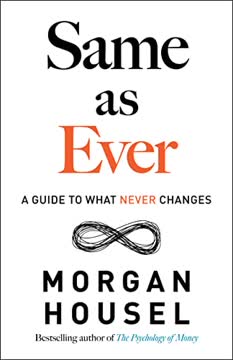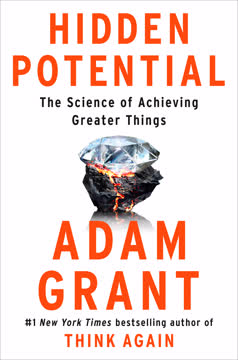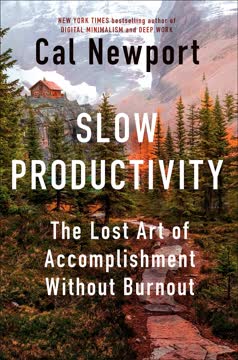Key Takeaways
1. Feel-good productivity: The key to sustainable success
Success doesn't lead to feeling good. Feeling good leads to success.
The core principle. Feel-good productivity is about doing more of what matters to you by focusing on activities that generate positive emotions. This approach challenges the conventional wisdom that success comes from discipline and hard work alone. Instead, it emphasizes that when we feel good, we become more creative, resilient, and productive.
Scientific basis. Research in positive psychology, particularly Barbara Fredrickson's "broaden-and-build" theory, supports this idea. Positive emotions broaden our awareness and build cognitive resources, creating an upward spiral of positivity and success. This is facilitated by the release of "feel-good hormones" like endorphins, serotonin, dopamine, and oxytocin, which enhance our capacity to focus, connect with others, and tackle challenges.
Practical application. To implement feel-good productivity:
- Identify activities that genuinely make you feel good
- Integrate these activities into your work and daily life
- Pay attention to how your mood affects your performance
- Cultivate a positive mindset towards your tasks and goals
2. Play: Harness the power of adventure and fun
Life is stressful. Play makes it fun.
Rediscovering playfulness. Incorporating a sense of play into work and daily life can significantly boost productivity and wellbeing. This doesn't mean being frivolous, but rather approaching tasks with curiosity, creativity, and enjoyment.
Strategies for playful productivity:
- Create an adventure: Treat your work as a game or quest
- Embrace your curiosity: Ask "what if" questions and explore new approaches
- Find the fun: Ask yourself, "What would this look like if it were fun?"
- Lower the stakes: Reframe failures as learning experiences
- Don't be serious, be sincere: Approach tasks with genuine interest rather than grim determination
By infusing play into your work, you can transform daunting tasks into engaging challenges, leading to increased motivation and better results.
3. Power: Boost confidence and take ownership
Believing you can is the first step to making sure you actually can.
Building self-efficacy. Power in this context refers to a sense of personal empowerment and control over one's life and work. This feeling of power is closely tied to self-efficacy, or the belief in one's ability to succeed.
Techniques to increase power:
- Use positive self-talk: Practice affirmations and encouraging internal dialogue
- Visualize success: Imagine yourself confidently completing tasks
- Learn from role models: Observe and emulate successful people in your field
- Take ownership: Focus on what you can control, even in challenging situations
- Embrace a growth mindset: View challenges as opportunities for learning and improvement
By boosting your sense of power and control, you can overcome self-doubt, take on bigger challenges, and achieve more.
4. People: Leverage social connections for energy
Teamwork is as much a psychological state as a way of dividing up tasks.
The power of social connections. Positive interactions with others can significantly boost our energy and productivity. This concept, known as "relational energy," emphasizes the importance of cultivating supportive relationships in both personal and professional settings.
Ways to harness relational energy:
- Adopt a "comrade mindset": View colleagues as teammates rather than competitors
- Find synchronicity: Work alongside others, even if on different tasks
- Embrace the helper's high: Look for opportunities to assist others
- Ask for help: Allow others to experience the joy of helping you
- Overcommunicate: Share both positive and negative information openly
- Create a culture of appreciation: Celebrate others' successes and contributions
By focusing on building positive relationships and fostering a supportive environment, you can create a network that energizes and motivates you.
5. Clarity: Overcome uncertainty through planning
If you don't know when you're doing something, chances are you won't do it.
Combating the fog of uncertainty. Uncertainty can lead to procrastination and decreased productivity. Gaining clarity about your goals and actions is crucial for overcoming this obstacle.
Methods to achieve clarity:
- Use Commander's Intent: Define the overall purpose of your project or task
- Apply the Five Whys: Dig deeper to understand the root purpose of your actions
- Set NICE goals: Near-term, Input-based, Controllable, and Energising objectives
- Define the Next Action Step: Break down large tasks into specific, actionable steps
- Implement intentions: Create "if-then" statements to trigger desired behaviors
- Time-block your schedule: Allocate specific time slots for important tasks
By reducing uncertainty and creating a clear plan of action, you can overcome procrastination and increase your productivity.
6. Courage: Face fears to unlock productivity
Make a start. You won't need to get perfect for a long time yet.
Overcoming fear-based procrastination. Fear, often manifesting as self-doubt or anxiety about failure, can be a significant barrier to productivity. Developing courage involves acknowledging these fears and moving forward despite them.
Strategies to build courage:
- Label your emotions: Identify and name your fears to reduce their power
- Reframe your identity: Adopt labels that empower rather than limit you
- Use the 10/10/10 rule: Consider how a decision will impact you in 10 minutes, 10 months, and 10 years
- Adjust the confidence equation: Focus on taking action rather than feeling confident
- Stop spotlighting: Remember that others are less focused on your actions than you think
- Employ the Batman effect: Adopt the persona of a confident alter ego when needed
By developing courage, you can push through fear-based procrastination and take on challenging tasks with greater ease.
7. Action: Break inertia and start moving
When you're doing nothing, it's easy to carry on doing nothing. And when you're working, it's much easier to carry on working.
Overcoming inertia. The tendency to remain in our current state, whether active or inactive, can be a significant barrier to productivity. Breaking this inertia is crucial for initiating and maintaining productive behavior.
Techniques to get moving:
- Reduce environmental friction: Make it easier to start desired behaviors
- Apply the five-minute rule: Commit to working on a task for just five minutes
- Define the next action step: Break down large tasks into small, specific actions
- Track your progress: Monitor your advancement to maintain motivation
- Find an accountability buddy: Partner with someone to hold each other responsible
- Practice self-forgiveness: Don't let setbacks derail your entire day
By focusing on taking that first step and maintaining momentum, you can overcome inertia and build productive habits.
8. Conservation: Do less to achieve more
Do less, so that you can unlock more.
The power of selective focus. Attempting to do too much can lead to burnout and decreased productivity. Conservation involves strategically limiting your commitments to focus on what truly matters.
Strategies for conservation:
- Create an energy investment portfolio: List your dreams and active investments
- Practice saying no: Use the "hell yeah or no" rule for new commitments
- Consider opportunity costs: Recognize what you're giving up by saying yes
- Add friction to distractions: Make it harder to engage in unproductive activities
- Correct course instead of failing with abandon: Get back on track after distractions
- Schedule regular breaks: Plan periods of rest throughout your day
By conserving your energy and focusing on your most important tasks, you can achieve more while avoiding burnout.
9. Recharge: Find effective ways to rest and recover
Breaks aren't a special treat. They're an absolute necessity.
The importance of intentional rest. Effective recharging is crucial for sustaining productivity and avoiding burnout. This involves finding activities that truly rejuvenate you, rather than those that merely feel like rest but don't actually recharge your energy.
Methods for effective recharging:
- Engage in CALM activities: Competence-building, Autonomous, Liberating, and Mellow pursuits
- Connect with nature: Spend time outdoors or bring natural elements into your environment
- Practice mindful recharging: Engage in hobbies or creative projects that align with your values
- Allow for mind-wandering: Give your brain time to process information and generate new ideas
- Apply the Reitoff principle: Give yourself permission to occasionally write off a day for rest
By prioritizing effective recharging, you can maintain high levels of energy and productivity over the long term.
10. Alignment: Connect daily actions with long-term values
Values affirmations make our most abstract ideals real. And they boost our confidence along the way.
Living authentically. Aligning your daily actions with your long-term values and goals is crucial for sustained motivation and fulfillment. This alignment helps prevent burnout and ensures that your efforts are directed towards what truly matters to you.
Techniques for alignment:
- Use the eulogy method: Imagine what you'd want said about you at your funeral
- Create an odyssey plan: Envision multiple possible futures for yourself
- Complete the wheel of life: Assess your satisfaction in various life domains
- Conduct a 12-month celebration: Imagine celebrating your progress in a year
- Set three daily alignment quests: Choose actions that move you towards your goals
- Run alignment experiments: Test small changes to see how they affect your fulfillment
By consistently aligning your actions with your values, you can create a sense of purpose and meaning in your work and life, leading to sustained productivity and satisfaction.
Last updated:
FAQ
What's "Feel-Good Productivity" by Ali Abdaal about?
- Core Concept: "Feel-Good Productivity" is about achieving more by focusing on what makes you feel good. It challenges the traditional views of productivity that emphasize discipline and hard work at any cost.
- Three-Part Framework: The book is structured around three main parts: Energise, Unblock, and Sustain. Each part addresses different aspects of productivity and how to enhance it.
- Scientific Approach: Ali Abdaal uses scientific research and personal anecdotes to explore how positive emotions can boost productivity and overall well-being.
- Practical Experiments: The book offers practical experiments and strategies to help readers apply the concepts to their own lives, aiming to transform work into a source of energy rather than a drain.
Why should I read "Feel-Good Productivity"?
- Alternative Perspective: It provides a fresh perspective on productivity, focusing on well-being and happiness rather than just output.
- Actionable Strategies: The book is filled with practical tips and experiments that can be easily integrated into daily life to improve productivity.
- Scientific Backing: The strategies are backed by psychological research, making them credible and effective.
- Personal Growth: It encourages readers to understand themselves better and align their work with their personal values, leading to more fulfilling and sustainable productivity.
What are the key takeaways of "Feel-Good Productivity"?
- Energisers: The book identifies three energisers—play, power, and people—that can boost productivity by making work feel better.
- Unblock Method: It introduces the unblock method to tackle procrastination by addressing underlying emotional blockers like uncertainty, fear, and inertia.
- Sustainable Productivity: Emphasizes the importance of sustainable productivity by avoiding burnout through conservation, recharging, and alignment with personal values.
- Experimental Mindset: Encourages adopting an experimental mindset to find what productivity strategies work best for you personally.
How does Ali Abdaal define "Feel-Good Productivity"?
- Focus on Well-being: Feel-good productivity is about prioritizing well-being and using it as a foundation for productivity.
- Positive Emotions: It leverages positive emotions to enhance cognitive processes, creativity, and motivation.
- Alternative to Hustle Culture: It challenges the notion that success requires suffering and promotes a more balanced approach to achieving goals.
- Personalized Approach: Encourages individuals to find what makes them feel good and use that to drive their productivity.
What are the energisers in "Feel-Good Productivity"?
- Play: Incorporating play into work can make tasks more enjoyable and less stressful, boosting creativity and productivity.
- Power: Feeling empowered and in control of your work can increase motivation and effectiveness.
- People: Positive interactions and relationships can energize and inspire, making work more fulfilling and productive.
What is the "Unblock Method" in "Feel-Good Productivity"?
- Addressing Emotional Blockers: The unblock method focuses on understanding and addressing the emotional blockers that lead to procrastination.
- Three Blockers: It identifies uncertainty, fear, and inertia as the main blockers that prevent productivity.
- Practical Solutions: Offers strategies to gain clarity, find courage, and get started on tasks to overcome these blockers.
- Focus on Feelings: Emphasizes the importance of feeling good to enhance productivity, rather than relying solely on motivation or discipline.
How does "Feel-Good Productivity" suggest avoiding burnout?
- Conserve Energy: Encourages doing less and saying no to overcommitment to avoid overexertion burnout.
- Recharge Properly: Highlights the importance of recharging through creative, natural, and mindless activities to prevent depletion burnout.
- Align with Values: Suggests aligning actions with personal values to avoid misalignment burnout and maintain long-term motivation.
- Scheduled Breaks: Recommends scheduling regular breaks and embracing distractions that energize rather than drain.
What are NICE goals in "Feel-Good Productivity"?
- Near-term: Focus on immediate steps rather than distant goals to avoid feeling overwhelmed.
- Input-based: Emphasize the process and actions you can control rather than the outcome.
- Controllable: Set goals that are within your control to increase the likelihood of success.
- Energising: Ensure goals are aligned with what makes you feel good to maintain motivation and productivity.
What is the "Eulogy Method" in "Feel-Good Productivity"?
- Long-term Perspective: Encourages thinking about what you want people to say about you at your funeral to clarify your values and priorities.
- Align Actions: Helps align current actions with long-term values to ensure a meaningful and fulfilling life.
- Reflect on Impact: Focuses on the impact you want to have on others and the world, guiding daily decisions and actions.
- Life Planning: Provides a framework for life planning that emphasizes personal growth and contribution over material success.
How does "Feel-Good Productivity" address procrastination?
- Understanding Procrastination: Identifies emotional blockers like uncertainty, fear, and inertia as root causes of procrastination.
- Unblock Method: Offers strategies to gain clarity, find courage, and take action to overcome these blockers.
- Focus on Feelings: Emphasizes the importance of feeling good to enhance productivity, rather than relying solely on motivation or discipline.
- Practical Experiments: Provides practical experiments to help readers apply the concepts and overcome procrastination in their own lives.
What are the best quotes from "Feel-Good Productivity" and what do they mean?
- "Success doesn’t lead to feeling good. Feeling good leads to success." This quote encapsulates the book's core message that well-being should be the foundation of productivity, not the other way around.
- "If the treatment isn’t working, question the diagnosis." Encourages readers to reassess their approach to productivity and consider whether their current strategies are truly effective.
- "No failure is ever just a failure. It’s an invitation to try something new." Highlights the importance of viewing failures as opportunities for growth and experimentation.
- "Don’t rote-learn your way to feel-good productivity. Experiment your way." Emphasizes the value of an experimental mindset in discovering what productivity strategies work best for you.
How can I apply the concepts from "Feel-Good Productivity" in my daily life?
- Identify Energisers: Incorporate play, power, and people into your daily routine to boost productivity and well-being.
- Use the Unblock Method: Address emotional blockers like uncertainty, fear, and inertia to overcome procrastination.
- Set NICE Goals: Focus on near-term, input-based, controllable, and energising goals to maintain motivation and productivity.
- Align with Values: Regularly reflect on your values and align your actions with them to ensure a meaningful and fulfilling life.
Review Summary
Feel-Good Productivity receives mixed reviews, with ratings ranging from 1 to 5 stars. Many readers appreciate the book's accessible approach to productivity and mental well-being, finding it refreshing and insightful. However, some criticize it for rehashing ideas from other self-help books and lacking originality. Fans praise Abdaal's writing style and practical tips, while detractors argue the content could have been condensed into a blog post. The book's focus on feeling good while being productive resonates with many, but experienced readers in the self-help genre may find it less valuable.
Similar Books










Download PDF
Download EPUB
.epub digital book format is ideal for reading ebooks on phones, tablets, and e-readers.




